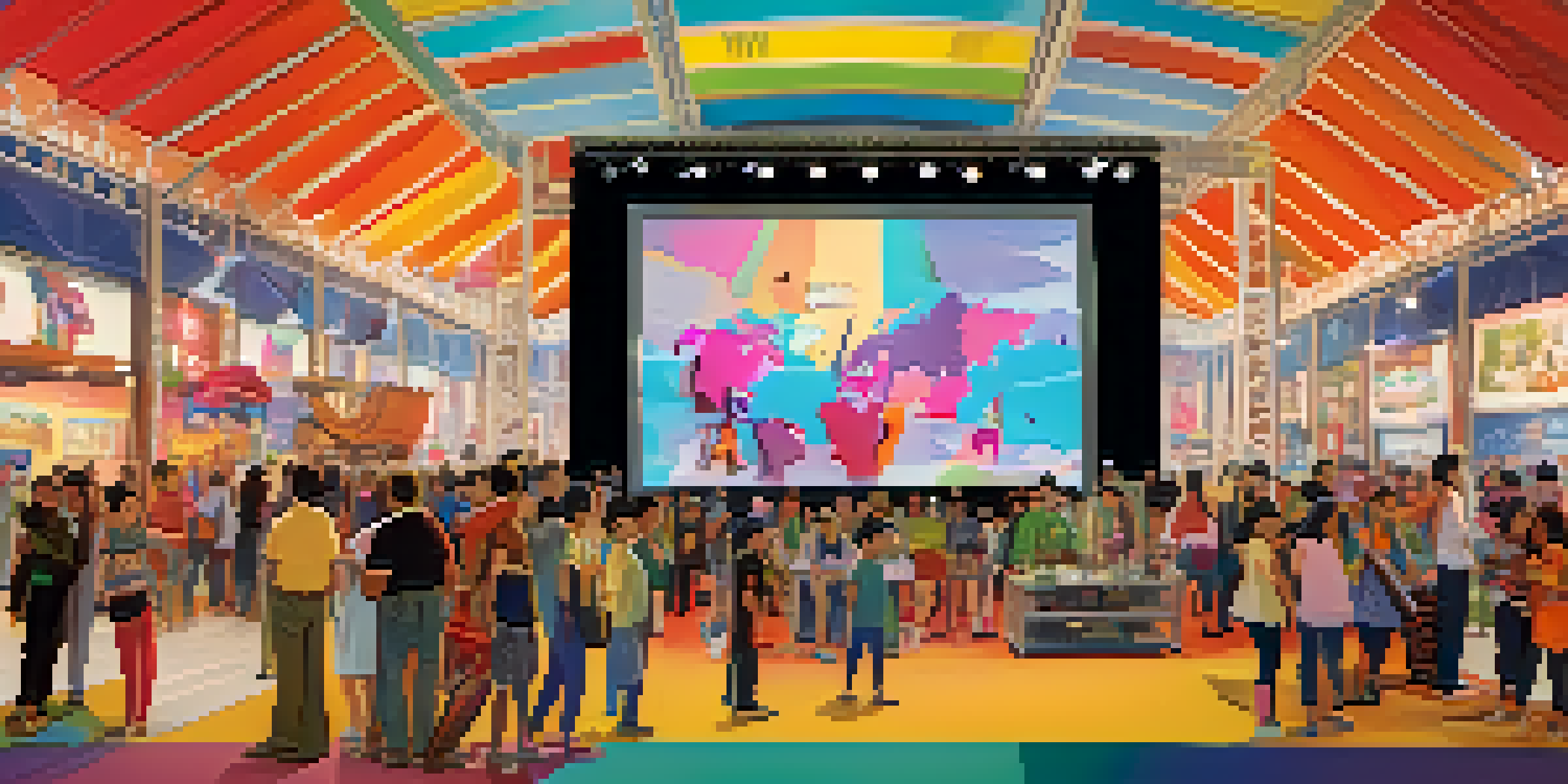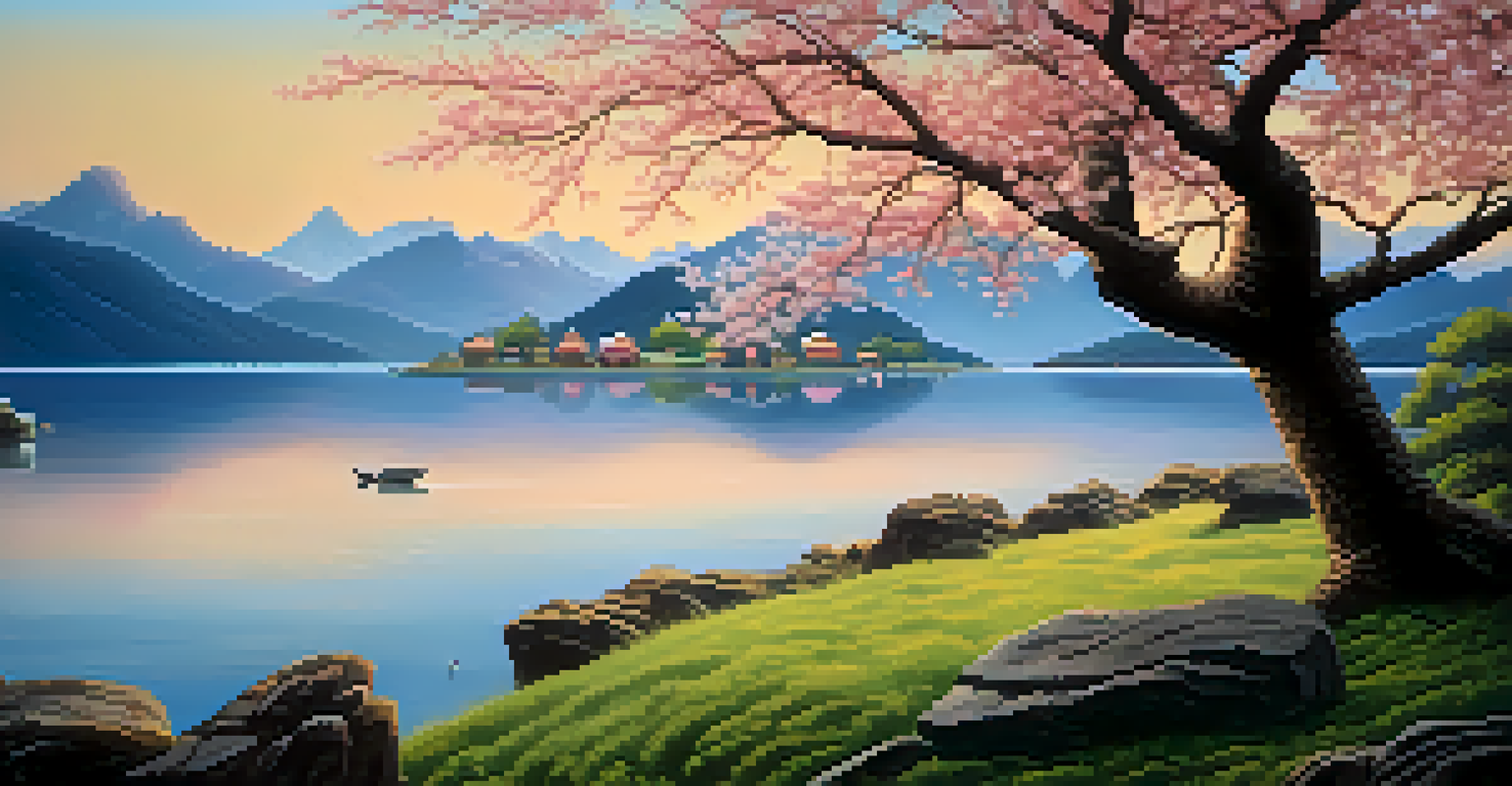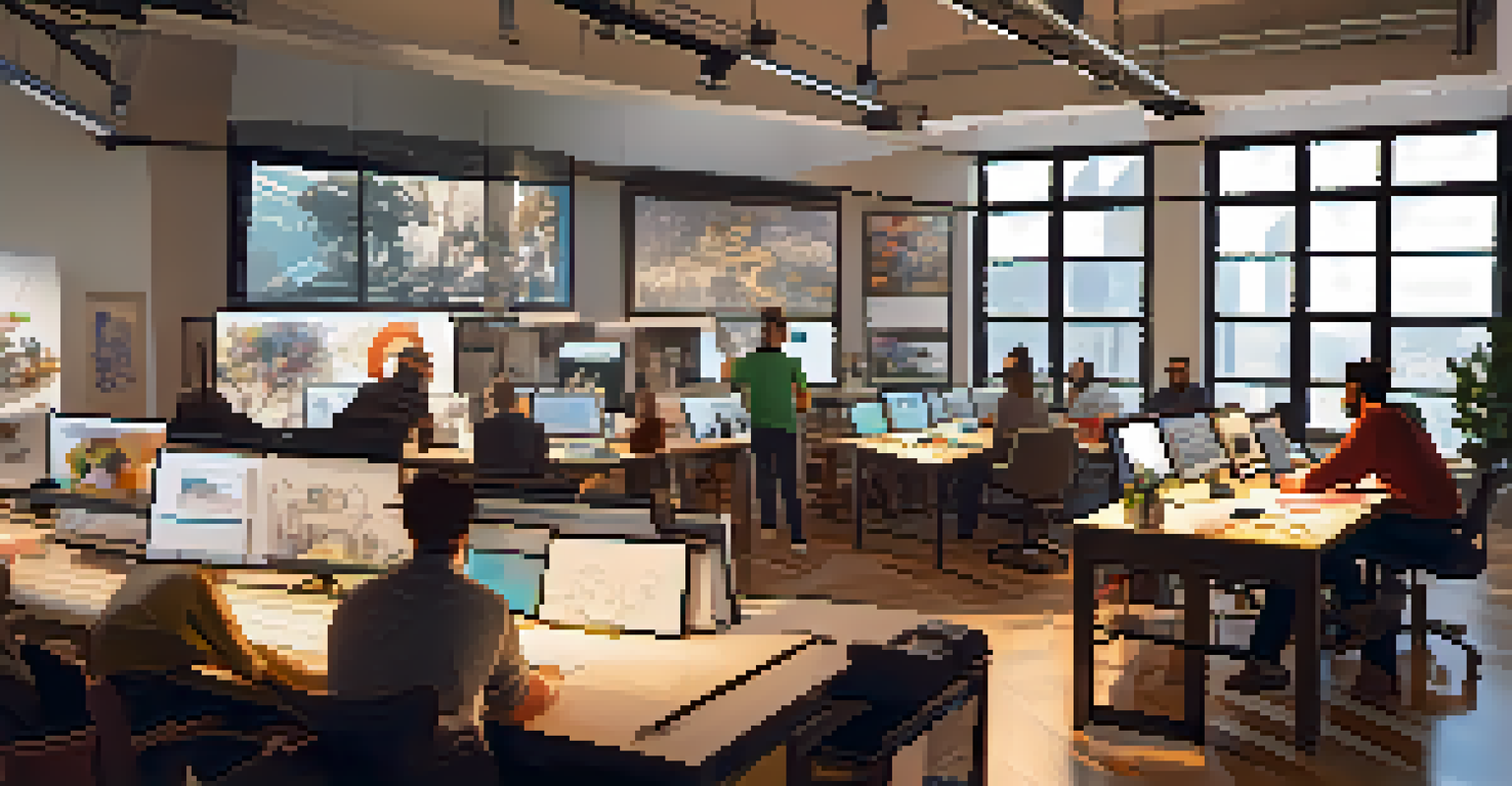Animation Across Borders: Global Influence on Style and Story

The Global Landscape of Animation: A Cultural Mosaic
Animation is a vibrant tapestry woven from diverse cultural threads. Each country brings its unique perspective, traditions, and storytelling methods to the art form. For instance, Japanese anime often emphasizes emotional depth and complex characters, while Western animation has traditionally focused on humor and family-friendly themes.
Animation is not just a medium for entertainment; it is a powerful means of communication that can transcend cultural boundaries and bring people together.
This cultural exchange goes beyond mere aesthetics; it influences the very narratives we see on screen. Animators worldwide draw inspiration from local folklore, societal issues, and even international events, creating stories that resonate across borders. As a result, animation becomes a powerful medium for sharing cultural identities and experiences.
Furthermore, the rise of digital platforms has made it easier for creators to share their work globally. Animated films and series can now reach audiences far beyond their home countries, sparking interest in different styles and storytelling techniques. This accessibility encourages a richer dialogue between cultures, leading to innovative approaches in animation.
Influential Styles: Learning from Global Traditions
Different regions have developed distinct animation styles that reflect their cultural heritage. For example, the fluid, graceful movements in traditional Chinese animation often draw from classical art forms, while the bold, exaggerated characters in American cartoons stem from a history of vaudeville and slapstick comedy. These stylistic choices are not just artistic; they tell stories about the societies they come from.

As animators study these varied styles, they often incorporate elements from different cultures into their own work. This blending of techniques can lead to a unique fusion that appeals to a wider audience. Take, for instance, the growing popularity of animated films that blend Western and Eastern aesthetics, captivating viewers with their fresh visual narratives.
Animation Reflects Cultural Diversity
Animation serves as a rich medium that showcases diverse cultural narratives and storytelling traditions from around the world.
Moreover, the influence of global styles allows for cross-cultural collaborations that enrich the animation landscape. These partnerships often result in groundbreaking projects that push the boundaries of storytelling and artistry, fostering a sense of unity in diversity.
Storytelling Traditions: Bridging Cultures Through Animation
Storytelling is at the heart of animation, and different cultures have unique ways of conveying stories. For example, African folktales often use animal characters to impart moral lessons, while Scandinavian animations may reflect themes of nature and mythology. Each narrative tradition carries its own rhythm and message, making the storytelling experience rich and varied.
The beauty of animation is that it allows us to tell stories that resonate across cultures, bridging gaps with creativity and imagination.
As global audiences consume these diverse narratives, they gain insights into cultures beyond their own. This exposure fosters empathy and understanding, bridging gaps between societies. The universal themes of love, friendship, and adventure resonate widely, making it easier for audiences to connect with stories from different backgrounds.
Additionally, animators have started to explore more inclusive storytelling, representing voices and experiences that have long been marginalized. This shift not only enriches the animation landscape but also reflects a growing recognition of the importance of diverse narratives in fostering a more inclusive world.
Technological Advancements: A New Era for Global Animation
The advent of new technologies has transformed the animation industry, opening doors for creators worldwide. Software advancements and digital tools have made it easier for animators to experiment with their craft, regardless of their geographic location. This democratization of technology allows for a more diverse range of voices in the animation space.
Moreover, social media platforms have become invaluable for animators to showcase their work and connect with audiences globally. A short animated clip can go viral overnight, introducing new styles and stories to millions. This instantaneous feedback loop encourages creators to innovate and adapt, often leading to a fusion of styles that reflects global trends.
Technological Advances Drive Innovation
New technologies and digital platforms have democratized animation, allowing creators from different backgrounds to share their unique styles globally.
As technology continues to evolve, we can expect even more exciting collaborations and artistic expressions to emerge. The synergy between technology and creativity not only enhances the quality of animation but also allows for a richer exploration of global narratives.
The Influence of Festivals: Celebrating Global Animation
Animation festivals like Annecy and the Ottawa International Animation Festival serve as melting pots for global talent. These events bring together animators from various backgrounds, fostering connections and collaborations that transcend borders. Attendees not only showcase their work but also share techniques, stories, and cultural insights that enrich the animation community.
Festivals often highlight the best of global animation, shining a spotlight on lesser-known styles and narratives. This exposure helps to elevate diverse voices and encourages animators to experiment with their storytelling. By celebrating different cultures, these festivals contribute to a broader understanding of animation as a universal language.
In addition to showcasing films, festivals often include workshops and panels that promote cultural exchange. These discussions can lead to new collaborations and creative partnerships, further blurring the lines between regional styles and stories. The collective celebration of animation fosters a spirit of unity and appreciation for the art form.
Cross-Cultural Collaborations: Merging Styles and Narratives
Collaboration between animators from different cultures is a growing trend that enriches the animation landscape. Projects like 'The Breadwinner,' which combines Irish and Afghan storytelling traditions, exemplify how merging styles can create something truly unique. These collaborations allow creators to explore new themes and narratives that resonate with diverse audiences.
Working together also encourages animators to step out of their comfort zones and experiment with new techniques. For instance, a Japanese animator might learn about Western storytelling structures while collaborating with a European counterpart. This exchange of ideas fosters creativity and innovation, leading to groundbreaking projects that push the boundaries of animation.
Collaborations Enhance Storytelling
Cross-cultural collaborations in animation result in innovative projects that merge distinct styles and narratives, enriching the art form.
Additionally, these cross-cultural partnerships often result in stories that reflect the complexities of our globalized world. By weaving together different cultural narratives, animators can address universal themes while honoring their unique backgrounds, ultimately creating a richer tapestry of storytelling.
The Future of Animation: Embracing Global Diversity
As the animation industry continues to evolve, embracing global diversity will be crucial for its future. Audiences are increasingly seeking stories that reflect a wide range of experiences, and animators must respond to this demand. By prioritizing inclusivity and representation, the animation industry can create a more vibrant and engaging landscape.
Emerging technologies and platforms will likely play a significant role in this evolution. As virtual reality and interactive animation gain popularity, creators will have new ways to tell stories that resonate with diverse audiences. This shift presents an opportunity for animators to explore innovative storytelling techniques that highlight cultural nuances and perspectives.

Ultimately, the future of animation lies in its ability to connect people across borders. By celebrating the richness of global influences on style and story, animators can create works that not only entertain but also inspire understanding and appreciation for the world's diverse cultures.